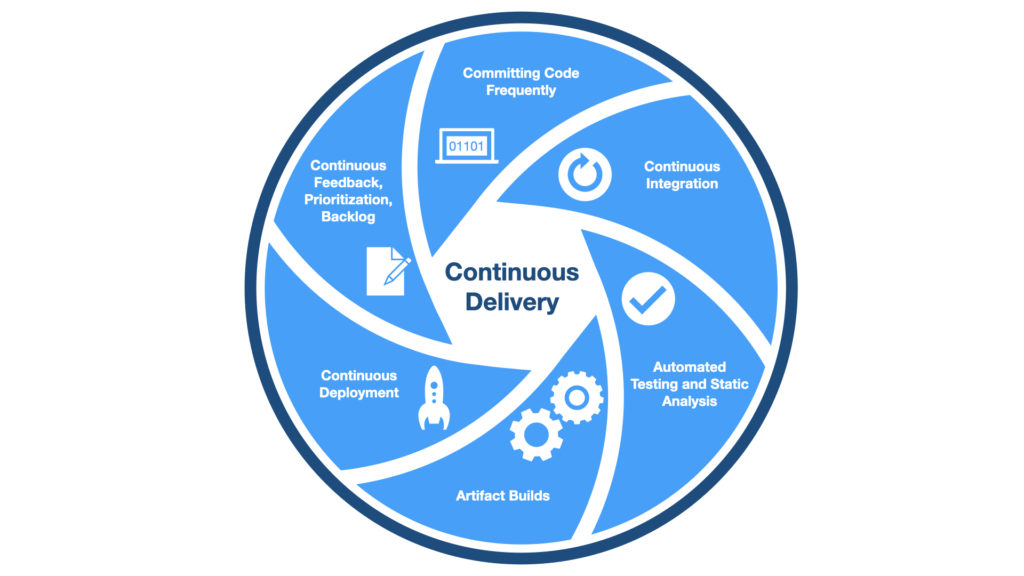It’s possible for a team to be competent with stakeholder involvement, consistent feedback, and efficient workflow. Continuous delivery, our final pillar of a high performing team, is what sets you apart. Whether you’re an organization of 1 or 100 you can and should strive for continuous delivery.
Trust is the backbone of a software team’s success.
Delivery is the moment that a software team provides true business value. Whether that value is perceived or actual ROI depends on what is being delivered, but even perceived value is important to team success. A highly successful team not only builds software, they build trust, and trust is the backbone of a software team’s success.
So what does continuous delivery look like? It hinges on the team’s ability to make software changes, verify those changes, and release those changes for use. Automation is at the core of continuous delivery. The DevOps movement has been guiding the collaboration of development and infrastructure teams to utilize automation to shorten the development lifecycle and provide continuous delivery of high quality software.
As developers, it’s our job to automate processes to reduce cost and generate new revenue. Automating our software delivery process does exactly that.

Continuous delivery encompasses a host of automation techniques:
- Committing code frequently to make sure we are integrating and communicating with our team. Continuous integration of our work avoids messy merges and enables the remaining lifecycle.
- Developing automated tests as part of the software development lifecycle (e.g. Test-Driven Development) to verify the code is still working as expected on every build
- Creating automated build pipelines that detect source code changes, pass the change through validation gates (e.g. running the tests, checking code formatting), and release the new software
- Using configuration management tools that automate the setup and management of the infrastructure necessary to run the software (e.g. servers, databases)
While the ultimate goal is getting software in production as quickly as possible, even releasing to a test environment is invaluable. Delivery gets our software in front of our stakeholders. This triggers the feedback we’re looking for.
Continuous delivery doesn’t have to be difficult. It doesn’t require an entire DevOps team to support you. In fact, even when I work as a team of 1, I use these techniques. Cloud platforms like AWS and GCP have made it simple to apply these techniques on your next project. I will be covering a how-to with AWS in an upcoming series, so stay tuned.
Incorporating continuous delivery into your development process will help you build the organizational trust it takes to be a truly high performing team.
Is your software development team performing at its peak? We can help! Schedule a free consultation to find out more.
